Description
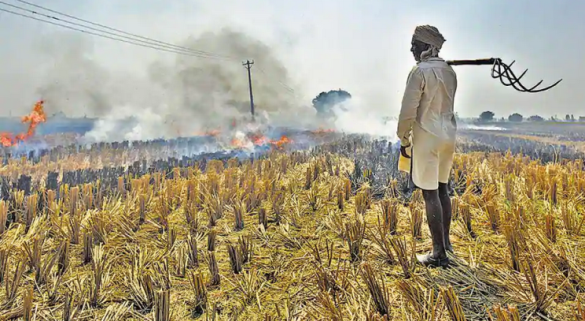
Disclaimer: Copyright infringement not intended.
Context
- The contribution of stubble burning in neighbouring States to the daily levels of PM2.5 – a chief pollutant – in Delhi was as high as 48% on November 7 and averaged 33.5% during the week after Deepavali (November 5-11).
- This is the same period when air pollution spiked in the Capital, National Capital Region and several other north Indian States.
Delhi
- Delhi usually experiences two spells of high air pollution during winter, one in October-November and the other in December-January.
- During October-November, one of the main reasons for the high pollution in Delhi and NCR is stubble burning. During the second spell, the main reason for air pollution is the transport of pollutants from the rest of the Indo-Gangetic Plain to Delhi combined with extreme cold and foggy conditions.
What is Stubble Burning?
- Stubble burning is, quite simply, the act of removing paddy crop residue from the field to sow wheat.
- It’s usually required in areas that use the ‘combine harvesting’ method which leaves crop residue behind.
Now, what is combine harvesting?
- Combines are machines that harvest, thresh i.e separate the grain, and also clean the separated grain, all at once.
- The problem, however, is that the machine doesn’t cut close enough to the ground, leaving stubble behind.
- This stubble is of no use for the farmer.
- There is pressure on the farmer to sow the next crop in time for it to achieve a full yield.
- The quickest and cheapest solution, therefore, is to clear the field by burning the stubble.
Statistics
- According to an August 2019 study titled ‘Fields on fire: Alternatives to crop residue burning in India’ farmers in northwest India burn around 23 million tonnes of rice straw so that they can clear the land quickly for the sowing of wheat.
- According to official reports, more than 500 million tonnes of parali (crop residues) is produced annually in the country.
Impact of Stubble Burning
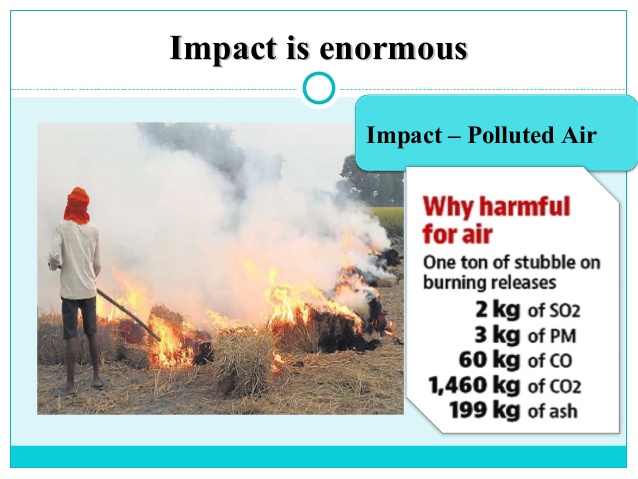
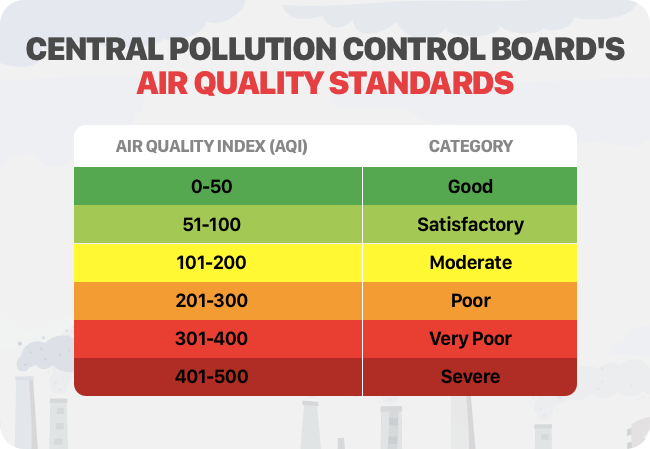
- Air Quality: Air quality monitoring stations in Delhi-NCR registered above 999 on the Air Quality Index in 2019, which is way beyond emergency levels.
- Pollution: The emissions directly contribute to environmental pollution, and are also responsible for the haze in Delhi and melting of Himalayan glaciers.
- Economic burden: The cost of air pollution due to stubble burning in India is estimated to be $30 billion annually.
- Soil Health: Stubble-burning deteriorates the soil’s organic content, essential nutrients and microbial activity – which together will reduce the soil’s long-term productivity.
- Human Health: PM 2.5 and PM10 particularly cause cancer. Severe neurological, cardiovascular and respiratory diseases, asthma, chronic obstructive pulmonary disease (COPD), bronchitis, lung capacity loss, emphysema, cancer, etc. It also leads to an increase in mortality rates due to the prolonged exposure to high pollution.
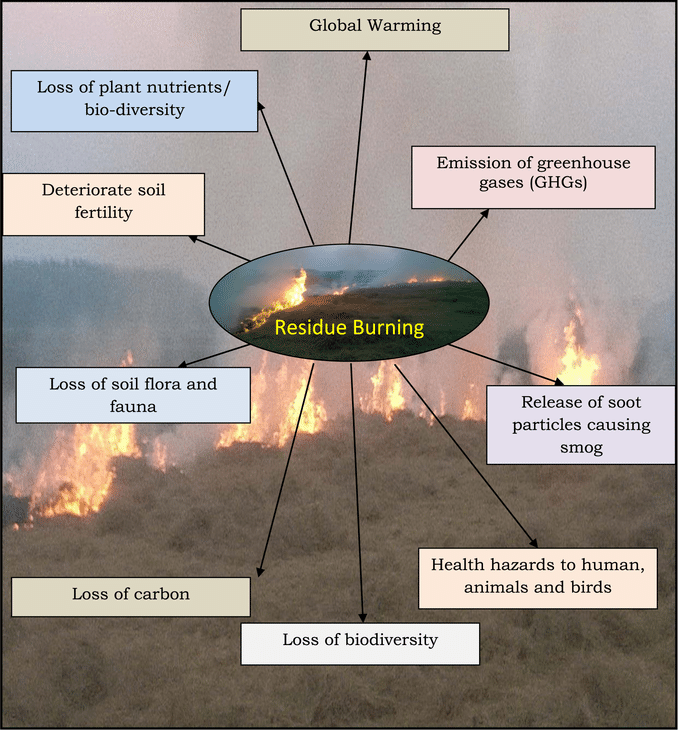
Solutions to the burning problem
- In 2014, the Union government released the National Policy for Management of Crop Residue.
Farmers can also manage crop residues effectively by employing agricultural machines like:
- Happy Seeder(used for sowing of crop in standing stubble)
- Rotavator (used for land preparation and incorporation of crop stubble in the soil)
- Zero till seed drill (used for land preparations directly sowing of seeds in the previous crop stubble)
- Baler (used for collection of straw and making bales of the paddy stubble)
- Paddy Straw Chopper (cutting of paddy stubble for easily mixing with the soil)
- Reaper Binder (used for harvesting paddy stubble and making into bundles)
- Waste Decomposer: Scientists at the National Centre for Organic Farming have developed a ‘Waste Decomposer’ concocted with effective microorganisms that propel in-situ composting of the crop residue.
“The first step to curb crop burning is to find uses for the stubble..- Centre for Science and Environment (CSE).
Other uses of stubble
Converting Crop Stubble into Animal Feed, Manure, Cardboard
- In South India, stubble is not burnt as there’s economic value as animal feed.
Converting Crop Stubble to Biodegradable Cutlery
- Kriya Labs, an IIT-Delhi startup, has developed a machine that can convert the leftover rice straw into pulp, and that is further moulded to produce biodegradable cutlery.
Biochar
- Another option is to convert stubble into biochar, which can be used as a fertiliser, by burning it in a kiln.
In power plants
- There is also the option of using straw to replace coal in old power plants. This would not only help to extend the life of the built infrastructure, but will also reduce environmental costs.
Redesigning- Combine Harvesters
- The best solution is if Combine Harvesters do not leave the stubble behind. This can be done by the Combine Harvester manufacturers by slightly tweaking the design of their machines. This will eradicate the entire problem from root and cause.
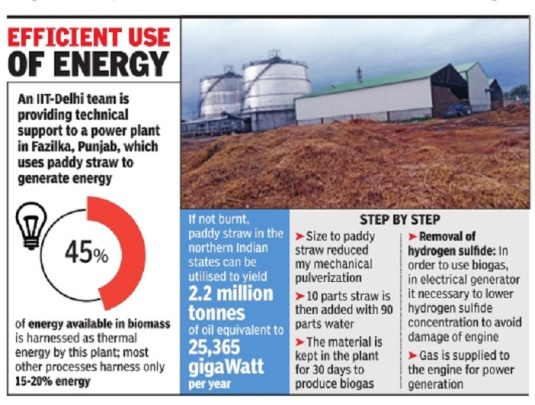
Agri-Waste Collection Centers
- The government may consider setting up “Agri- waste Collection Centres” alongside the “Paddy Purchase Centres”.
- Here, the farmers may sell their agri-waste at a reasonable price and earn some additional income and are not tempted to burn it.
|
Why is stubble burning a problem in the Northern states only?
India relies on its northern states of Punjab, Haryana, western Uttar Pradesh and Uttarakhand for wheat.
Now, states in the south use combine harvesting too. But the clinching difference is that they don’t have the urgency to remove the stubble to make it ready for the next crop.
So won't reducing paddy production reduce stubble too?
Yes, that is simple math, but given that rice is a lucrative crop, how do we go about doing this? The answer is to give incentive to farmers to grow other crops.
|
Crop Diversification - A long term solution
- A shift to crops such as maize, beans and lentils need to be envisaged.
- This would reduce the burning because they are normally harvested by hand or can be gathered earlier.
- The Centre and state governments could adopt methods to incentivize farmers, rather than penalizing them.
- If production of other crops, like maize, is made more lucrative, then farmers will switch to growing those.
- Another way to reduce stubble burning is to replace long-duration paddy varieties with shorter duration varieties like Pusa Basmati-1509 and PR-126.
Directions from the apex court
- The Supreme Court has been asking if the MSP can be withheld over farm fires.
Final Thoughts
- A holistic approach is required to address crop residue burning.
- This includes a multi-disciplinary and multi-agency setting involving
- technical agencies,
- market-based economic tools,
- supporting agricultural and environmental policies, and
- awareness and capacity building for farmers.
- In the medium term (that is the next seven years), there is a need to encourage crop diversification and rotation.
- There also needs to be a central coordinating mechanism for paddy stubble management and crop diversification with adequate resources, and a clear assignment of responsibilities between national and sub-national agencies.
- A push towards crop diversification package should be a mix of policy measures such as encouragement of agro-business enterprises – possibly under Aatmanirbhar Bharat Abhiyan (Self-reliant India) – farmer awareness campaigns, economic incentives such as minimum support prices for alternative crops, along with infrastructure support such as agricultural inputs for identified alternative crops, cold storage facilities and market promotion mechanisms.
|
The Chattisgarh Model of Gauthan
The Chhattisgarh Government has undertaken an innovative experiment of setting up "gauthans" to curb stubble burning. A gauthan is a dedicated five-acre plot, held in common by each village, where all the unused parali is collected through parali daan (people’s donations) and is converted into organic fertilizer by rural youth. This provides them a living.The government supports the transportation of parali from the farm to the nearest gauthan. The state has already developed more than 2,000 gauthans.
The Chattisgarh Model of Gauthan generates employment among rural youth as well. A committee consisting of economists, agricultural experts, farmer delegates and bureaucrats can be set up at national level to evaluate the parali burning crisis and explore the possibilities of integrating Gauthan concept with schemes like the MGNREGA by expanding the MGNREGA scheme to harvesting and composting.
|
https://epaper.thehindu.com/Home/ShareArticle?OrgId=GGT98AH9B.1&imageview=0















